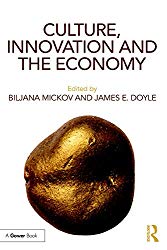Sustainable Cultural Development – Unified Systems and New Governance in Cultural Life
An Irish expert James Doyle talks about the policy of turning empty urban spaces into art spaces that are public and ready to be used in Dublin, Ireland. There are so many literature pieces that credit community art spaces with social interaction and engagement and generating economic revitalization. But what is the ability of art spaces to understand these outcomes depends on their role as public spaces and that their community development potential that can be expanded with greater attention to this role. An analysis of the public space characteristics is useful because it encourages consideration of overlooked issues, particularly the effect of the physical environment on outcomes related to community development.
Artists often wonder if there is such a thing as public art, and what is then a private art? In public spaces, it remains a key issue as art in the public realm that takes on an ever more significant role in our urban parks, streets, and avenues. Public art is a communal activity; its reach can be powerful for communities and neighborhoods. Artists realize a democratic ideal in outdoor settings that are free to all viewers.
But what is the relationship between public space and community development at various types of art spaces including artist cooperatives, ethnic-specific art spaces, and city-sponsored art centers in the central city and suburban locations? Art spaces serve various public space roles related to community development within the ability of many to perform as public spaces that is hindered by facility design issues and poor physical connections in their surrounding area. Does an urban community development has a role of the art spaces through their function as public spaces explain J. Doyle in the example of Dublin City mentioned in the book? “Yes, somewhat, its more about design thinking, and how that can transmute into socially engaged design thinking which is a paradigm I’ve been working on for a while. It has its nexus on the social design which is an adjunct of design thinking one stemming from the other. Socially engaged design thinking is really taking social design to the next level separating out the need for a designer where a professional isn’t necessarily needed at the center of to energize the work. The project we undertook in Dublin was an early iteration of social design. I use the example of an independent project I co-founded called dploy Dublin which was based in a vacant space one that became a hub for a huge menagerie of cultural and creative practices and hosted a number of events including a creative city seminar with experts in attendance fo around the world. „
There are many vacant urban places that owners or government can not afford to renovate and turn into a cultural meeting points or galleries without serious investment. And what are the criteria and the strategy in Dublin, Ireland? What kind of cultural space do we need? And which type of space is going to be the most sustainable? „And even do we need a cultural pace here, I’m biased so the answer I always going to be yes. However you have to be prepared to say ok we don’t need an Arts Centr, but we do need a dance venue or a home for opera. And then it’s about its longevity & sustainability, explained Doyle“ And it may be that in answering these questions, what we need is a new venue for boxing which is a cultural activity that very centered on community. We’ve got to look at policy right down to the detail and with complete realism. „I wouldn’t look to Dublin for example we have struggled with our own problems renovation is just one of them. In fact, renovation has often been the most difficult especially with properties that are protected structures. I think my previous answer probably told you more about the criteria we’re using just now. In regard to vacant space, I would say two things: first value the arts if your an arts organization and someone offers you a vacant space stop. Don’t accept until you’ve taken advice, check the costs and value your own input. Far to many artists and arts organizations have taken space for free and with no guarantees then when the pace is needed again they get put out on the street. So first and foremost the arts have to see themselves as valuable and then do as business doe strike a hard deal. If an owner of the property offers you the space to get the best deal you can itemize and cost the work you will put in and the value of your project and then be prepared to say no. Always look for a longer lease than is on offer remember times will be bad and good and if you’re in it for the long haul you should make sure you have the security of tenure. Secondly, remember that you’re in the business of staying in business so make sure that you have a long term plan three to five-year minimum and 25 plus for an organization. Of course, there’s always the temporary but that’s not an area I have a great interest in“, explained Doyle. Talking about the subject and about Dublin in Ireland, Doyle mentioned the keyword – sustainability. He addressed exactly this issue in the first book that he wrote with Dr. Biljana Mickov, an expert from E.Europe, Serbia “Sustainable Cultural Development – Unified Systems and New Governance in Cultural Life”. In the book, we argue that effective programs to promote greater participation in cultural life require substantial investment in research and strategic planning“.



